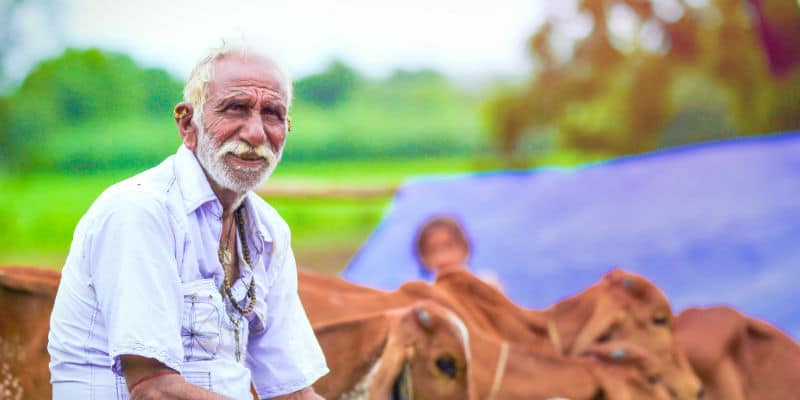Of the estimated 39 million blind people in the world today, nearly a third live in India. An estimated 75% of blindness in India is preventable, but too many lack access to the eye care they need.
Apart from the emotional and social tolls associated with the loss of sight, most people who lose their sight in India lose with it the ability to make a living or pursue any more education. Some estimates suggest the Indian economy loses 1.4% of its GNI each year due to the impact of blindness.
Dr. V’s vision
Early in his career, Dr. Govindappa Venkataswamy was well aware of the blindness that plagued his country. A trained ophthalmologist, he personally performed more than 100,000 eye surgeries during his career. When he retired in 1976 at the government-mandated age of 58, Dr. V, as he is popularly known, still had a burning desire to do something to relieve the suffering of his fellow citizens.
For every surgery he had performed, Dr. V knew that many, many more people existed who simply went without. The cost of corrective surgery put it out of reach for most people, and the lack of trained eye doctors in the country meant many people, especially those living in rural areas, had to travel long distances to seek care. We refer to this phenomenon as nonconsumption—when barriers like cost, time, skill, or inaccessibility prevent people from consuming products or services from which they would otherwise benefit.
Most conventional eye care solutions targeted the relatively privileged segment of the population that could afford eye surgery. Other organizations existed that provided free eye care to those in need, but because they relied heavily on volunteers and donations, these solutions were inherently limited in their scale and sustainability. Dr. V set to work creating a business model for eye care that could remove the barriers that prevented India’s poor from receiving needed treatment, while at the same time generating enough revenue to make the solution sustainable and replicable. The result was Aravind Eye Care.
How Aravind did it
The first step was improving efficiency. Following in others’ footsteps—notably Henry Ford’s—Dr. V created an assembly-line approach to eye surgery that allows doctors to perform surgeries almost continuously, rather than waiting in between surgeries as nurses prepare patients. As a result, Aravind’s surgeons perform more than 2000 surgeries per year, as opposed to the 150-200 per year performed by surgeons elsewhere in the region.
This improved productivity and drove down Aravind’s costs per surgery, but Dr. V wasn’t done innovating. He developed a system where Aravind offered high-end care, such as additional medical procedures and private rooms, to patients who were willing to pay for it, and he used the additional cash flow to subsidize or entirely cover the costs of patients who couldn’t afford surgery. Aravind also built its own factory for intraocular lenses, where it developed efficient processes that further drove down costs while also making its supply more predictable. As a result of all of these innovations, a cataract surgery that might cost $3,000 in the United States costs as little as $50 at an Aravind clinic.
Aravind’s impact on prosperity
Between its hospitals and outreach camps, Aravind serves more than four million patients and performs more than 400,000 eye surgeries each year, but its impact stretches far beyond eye care. As Aravind has grown, it has opened clinics in rural locations where nonconsumers of eye care can more easily access them, creating thousands of long-term, local jobs. Notably, in a place where gender-equality is frequently a barrier to development, 60% of the organization’s workforce is made up of women recruited and trained in local communities to work as certified technicians. Dr. V’s original 11-bed hospital now houses one of the finest ophthalmology research and educational facilities in the country, and Aravind has successfully lobbied the Indian government to increase funding for eye care, helping millions.
Dr. V’s story is unique and inspiring, but the general principles it teaches apply broadly. Any time innovators transform a product or service that was previously complicated, expensive, and inaccessible into one that is simple, affordable, and accessible, such that a new population of people can consume it, it has massive positive effects for its customers and the economy as a whole. We refer to this type of innovation as a market-creating innovation, and opportunities for them abound.
Aravind, for example, has just scratched the surface of the nonconsumption of eye care that exists throughout many low- and middle-income countries around the globe. Global blindness is projected to triple by 2050, most prevalently in South Asia and sub-Saharan Africa. Aravind’s business model has been remarkably successful in India. Why couldn’t it be replicated in Indonesia or Tanzania?



